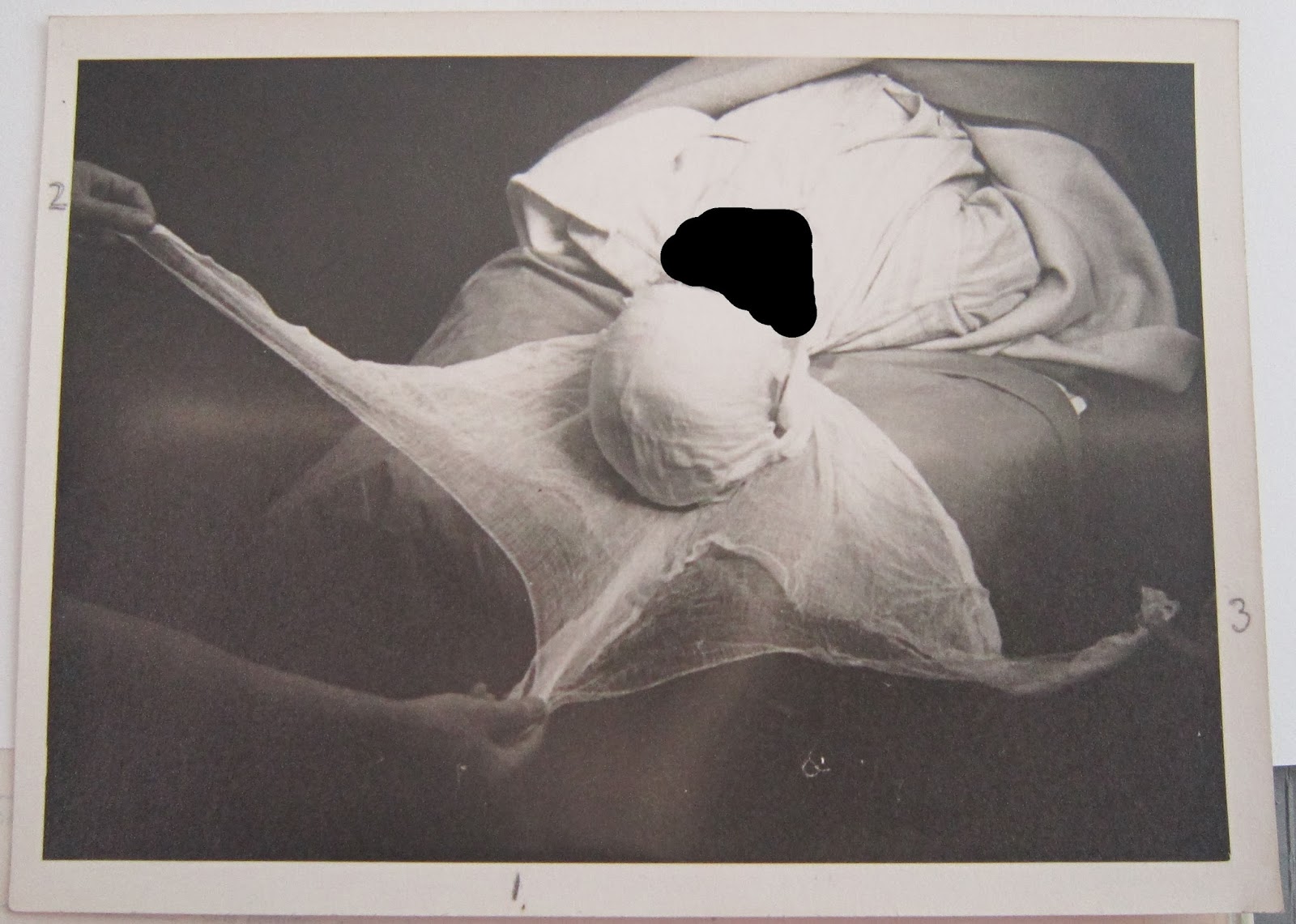I am currently four weeks into a ten week cataloguing internship with LHSA working on the Wellcome Trust funded project, Cataloguing Norman Dott’s Neurosurgical Case Notes (1920-1960). During my internship I will be assisting Louise,with cataloguing as well as finding out about the work carried out at LHSA. The records I will be cataloguing relate to Dott’s work during the Second World War, when he set up the Brain Injuries Unit in Bangour General Emergency Service Hospital in Broxburn, West Lothian.
Dott's ward at Bangour, c. 1939
Generally the patients are military personnel; however I have also come across a couple of civilian and private cases. Several patients were sent there suffering from headaches, as Dott was particularly interested in investigating these cases, but reasons for admission were pretty varied and include many cases of head injuries sustained both as a result of military service and whilst off duty. As part of Dott’s role he also had to assess his patient’s capacity for continued military service and give a recommendation as to their grading or discharge. He would also give his recommendation regarding pension eligibility for those soldiers who were to be discharged due to their condition and his opinion as to whether their injury or illness arose or was exacerbated by military service. So far the patients I have come across have been mostly male, although there have been a couple of females who were serving as Volunteers with the Auxiliary Territorial Service.
I have selected an interesting case to share which involved a soldier who received a gunshot wound to the head. This case is particularly interesting as the patient had a long relationship with the Brain Injuries Unit, lasting 23 years, and the case file contains several different types of material including case notes, correspondence, clinical charts, drawings and photographs. This patient was injured shortly after coming off guard duty when a rifle was accidently fired by a fellow officer. Initially the patient was taken to the Military Hospital at Edinburgh Castle, but was quickly transferred to Bangour. The bullet had fractured his skull, passing through the left frontal region and an operation was performed to remove the loose bone fragments and damaged tissue. This drawing from the case notes shows the passage of the bullet:
LHB40 CC/2/PR3.189, patient identifying information redacted
LHB40 CC/2/PR3.189, patient identifying information redacted
In 1947 he returned to Bangour to have this defect repaired. Rather than the bone graft mentioned in the letter, an acrylic plate was made to reconstruct his damaged skull. This process involved two operations, the first to take a cast and the second to fit an acrylic resin mould. Again, the patient recovered well and it was noted that, ‘the cosmetic result was very satisfactory’. These pictures show the patient’s wound being dressed after the operation, and are two of six found in the case file:








.jpg)





